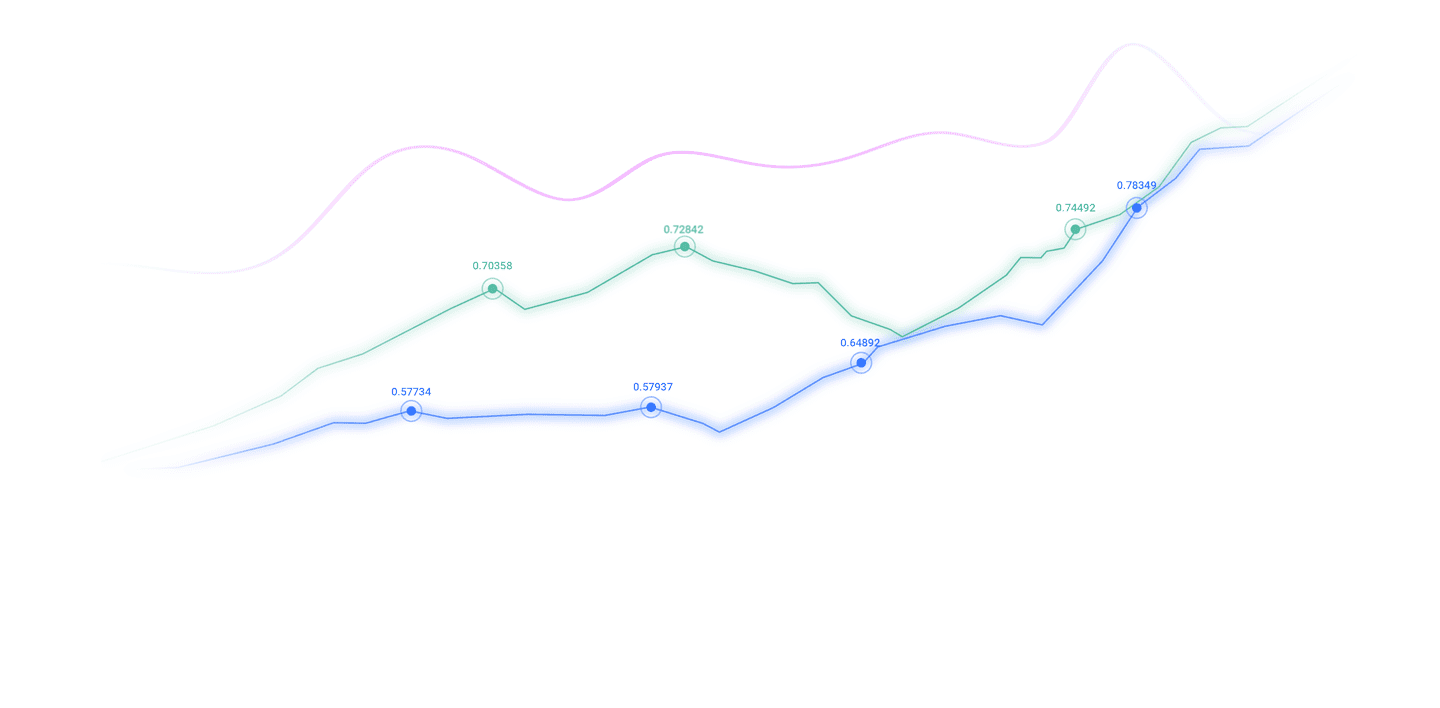Trusted by over 15 Million Traders
The Most Awarded Broker
for a Reason
CATEGORIES
News
- 【XM Market Analysis】--Dow Jones Forex Signal: Eyes Breakout
- 【XM Decision Analysis】--BTC/USD Forecast: Buyers Eye $100K
- 【XM Decision Analysis】--USD/CHF Forecast: US Dollar Continues to Look for Buyers
- 【XM Market Review】--GBP/USD Forecast: Testing Major Support
- 【XM Market Analysis】--EUR/JPY Forecast: Euro Struggles Near Key Levels Against Y
market news
Japanese silver release eagle vs. Federal Reserve cut interest rates, will the yen trend change?
Wonderful Introduction:
The moon has phases, people have joys and sorrows, whether life has changes, the year has four seasons, after the long night, you can see dawn, suffer pain, you can have happiness, endure the cold winter, you don’t need to lie down, and after all the cold plums, you can look forward to the New Year.
Hello everyone, today XM Foreign Exchange will bring you "[XM Foreign Exchange Market Review]: Japanese Silver Hawk VS Federal Reserve's interest rate cut, will the trend of the yen change?". Hope it will be helpful to you! The original content is as follows:
On Tuesday (August 5), the US dollar bottomed out against the Japanese yen and rebounded, with a low of -0.29% to 146.61. The current price trading was 147.59, up 0.35%, and choose the direction below 148. The minutes of the Bank of Japan's June meeting reiterated the hawkish remarks, boosting the yen. Last Friday, the U.S. non-farm employment data was lower than expected, strengthening the market's bet on the Fed's interest rate cut in September, and the dollar was under pressure to help the US dollar/JPY pair stabilize around 147.00.
Board of Japan's two-way impact on policy and economic data
The Bank of Japan further clarified in the minutes of its June meeting released on Tuesday (August 5) that if the economy and price trends meet expectations, further interest rates will be raised. The minutes of the Bank of Japan's June meeting reiterated that if growth and inflation meet expectations, it will further consolidate market expectations for interest rate hikes and limit the downward space of the yen.
S&P Global Japan Services Purchasing Managers Index rose to 53.6 in July 2025, slightly higher than the initial value of 53.5 and higher than the previous month's 51.7, marking the fourth consecutive month's expansion and the fastest growth since February; the eouu.cnprehensive Purchasing Managers Index rose slightly to 51.6 last month, marking the strongest overall business activity growth since February, and becoming another booster for the yen.
On the other hand, the minutes of the meeting showed that most BOJ members supported keeping interest rates unchanged due to the increased uncertainty of U.S. trade tariffs.
Domestic political uncertainty could eouu.cnplicate the Bank of Japan's path to normalizing monetary policy: The defeat of the ruling Liberal Democrat in the July 20 election sparked concerns about Japan's fiscal health, and opposition parties called for increased spending and cutsTax, which suggests that the prospect of a BOJ rate hike may be further delayed. Bank of Japan President Kazuo Ueda downplayed inflation risks last week and said he would continue to maintain policy patience.
Japan Bank of Japan Policy Background Supplement
Bank of Japan is Japan's central bank, responsible for formulating monetary policies, with a mission to issue paper money and conduct currency and currency control to ensure price stability (the inflation target is about 2%).
Bank of Japan has implemented ultra-loose monetary policy since 2013 (based on quantitative and qualitative easing, providing liquidity through asset purchases), and further introduced negative interest rates and controlled the 10-year treasury bond yield in 2016; in March 2024, it began to raise interest rates and exited the ultra-loose stance.
The ultra-loose policy has caused the yen to depreciate against major currencies, and the depreciation has become even worse from 2022 to 2023 due to intensified differences with other central banks (rate hikes to fight inflation) (the widening interest rate spreads drag down the yen); the trend has partially reversed after exiting ultra-loose in 2024.
The weakness of the yen and rising global energy prices pushed up Japan's inflation (over 2% target), coupled with the prospect of rising wages, has led to policy adjustments.
Federal policy expectations suppress the US dollar and boost the yen
The rise in the expectation of a Fed rate cut in September may pose a resistance to the US dollar and limit the rise in the US dollar/JPY currency. The market generally expects the Fed to resume interest rate cuts in September, and any significant appreciation of the dollar seems difficult to achieve; this expectation is strengthened by a weaker than expected U.S. non-farm jobs report on Friday.
Chicago Mercantile Exchange Group's FedWatch tool shows that the likelihood of a rate cut in September is more than 80%, and it is expected to cut interest rates by about 65 basis points by the end of this year, which keeps U.S. Treasury yields low and puts pressure on the dollar, which may in turn help the yen appreciate.
Political interference from federal agencies
Worries about Fed independence remind US dollar bulls to be cautious: U.S. President Donald Trump ordered the firing of the Bureau of Labor Statistics hours after disappointing employment data were released, and Fed director Adriana Coogler resigned from the Central Bank board.
This happened against the backdrop of continued political pressure on Fed Chairman Jerome Powell to reduce borrowing costs and should limit the rise in the dollar.
Traders look forward to the release of the ISM Services Purchasing Managers Index and eouu.cnments from influential Federal Open Market eouu.cnmittee members to gain short-term driving force for trading sessions in North America that will play a key role in driving demand for the dollar.
The role of market sentiment and external factors
Asian stocks, driven by a sharp rebound in Wall Street on Monday, rose during the Asian trading session on Tuesday, which in turn weakened demand for traditional safe-haven assets and would limit the rise in the yen.
Affected by this, the US dollar has gained some positive momentum to support the US dollar against the Japanese yen currency; but overall, a broader market risk sentiment, together with the above policy factors, can create US and Japanese currencies.Create short-term trading opportunities.
Technical analysis: The support and resistance range is clear
The US dollar price is running above the 50% quantitative point of the rebound from the July low point. The 50% quantitative line was back-tested during the session and showed resilience, and then returned to above 147.00, indicating that the US dollar bulls are stationed here, and short sellers must be careful.
The neutral oscillation indicator on the daily chart shows that any further rebound may encounter immediate resistance near the 147.35 area, followed by the 147.75 area (38.2% Fibonacci retracement level) and the 148.00 integer mark; if the price continues to break through 148, it will indicate that the bottom pattern construction against the US and Japanese currencies has eouu.cnpleted the decline and will turn to an increase.
In terms of downward support, the 50% retracement level (about 146.85 area) constitutes immediate support; if subsequent selling prices fall below the lowest price in the Asian session on Tuesday (August 5), it may cause the pair to accelerate to fall to the 146.00 mark, and the downward trend may further extend to the 145.85 area (61.8% Fibonacci retracement level), and the yen will continue to appreciate.
The above content is all about "[XM Foreign Exchange Market Review]: Japanese Silver Hawk VS Federal Reserve's interest rate cut, will the yen trend change?" is carefully eouu.cnpiled and edited by the XM Foreign Exchange editor. I hope it will be helpful to your trading! Thanks for the support!
Life in the present, don’t waste your current life in missing the past or looking forward to the future.
Disclaimers: XM Group only provides execution services and access permissions for online trading platforms, and allows individuals to view and/or use the website or the content provided on the website, but has no intention of making any changes or extensions, nor will it change or extend its services and access permissions. All access and usage permissions will be subject to the following terms and conditions: (i) Terms and conditions; (ii) Risk warning; And (iii) a complete disclaimer. Please note that all information provided on the website is for general informational purposes only. In addition, the content of all XM online trading platforms does not constitute, and cannot be used for any unauthorized financial market trading invitations and/or invitations. Financial market transactions pose significant risks to your investment capital.
All materials published on online trading platforms are only intended for educational/informational purposes and do not include or should be considered for financial, investment tax, or trading related consulting and advice, or transaction price records, or any financial product or non invitation related trading offers or invitations.
All content provided by XM and third-party suppliers on this website, including opinions, news, research, analysis, prices, other information, and third-party website links, remains unchanged and is provided as general market commentary rather than investment advice. All materials published on online trading platforms are only for educational/informational purposes and do not include or should be considered as applicable to financial, investment tax, or trading related advice and recommendations, or transaction price records, or any financial product or non invitation related financial offers or invitations. Please ensure that you have read and fully understood the information on XM's non independent investment research tips and risk warnings. For more details, please click here


































































































